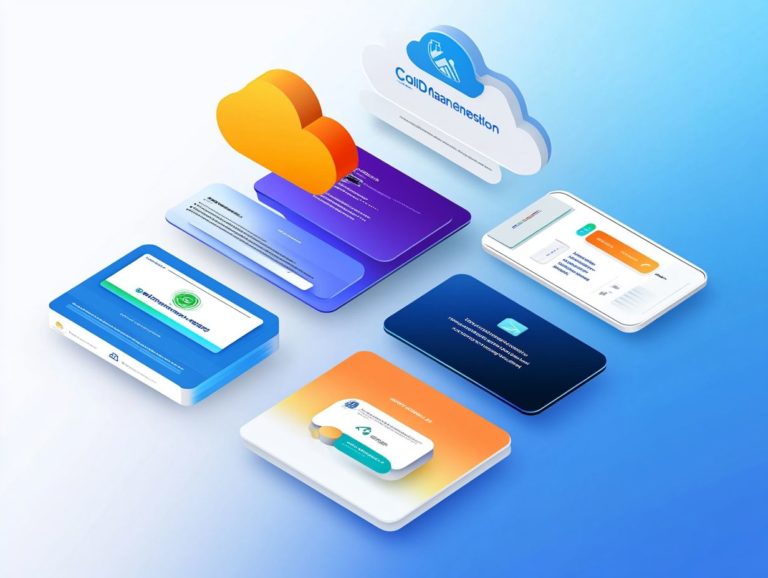5 Important Cloud Cost Management Metrics
In today’s ever-evolving digital landscape, mastering cloud cost management is essential for businesses of all sizes. As you increasingly rely on cloud services, understanding important numbers such as total cloud spend, cost per resource, and cost per user becomes vital to optimize your budget and maximize value.
This article delves into five crucial cloud cost management metrics, emphasizing the significance of managing these expenses effectively. It also highlights potential pitfalls you might encounter and provides strategies for optimization.
Discover how to master cloud spending and propel your business toward lasting success!
Contents
- Key Takeaways:
- 1. Total Cloud Spend
- 2. Cost per Resource
- 3. Cost per User
- 4. Cost per Application
- 5. Cost per Workload
- Why Is Cloud Cost Management Important?
- What Are the Potential Risks of Poor Cloud Cost Management?
- What Are the Key Factors to Consider When Managing Cloud Costs?
- How Can Businesses Optimize Their Cloud Cost Management?
- What Are the Common Mistakes Businesses Make with Cloud Cost Management?
- What Are the Future Trends in Cloud Cost Management?
- Frequently Asked Questions
- What are the 5 important cloud cost management metrics?
- Why are these metrics important for cloud cost management?
- What is cost per compute hour?
- How is cost per storage unit calculated?
- Why is cost per network transfer an important metric?
- How can the cost per application metric help businesses with cloud cost management?
Key Takeaways:
- Total Cloud Spend: Keep track of your total expenses to find savings.
- Cost per Resource: Identify what costs too much and adjust usage accordingly.
- Why It Matters: Proper management prevents surprises and boosts efficiency.
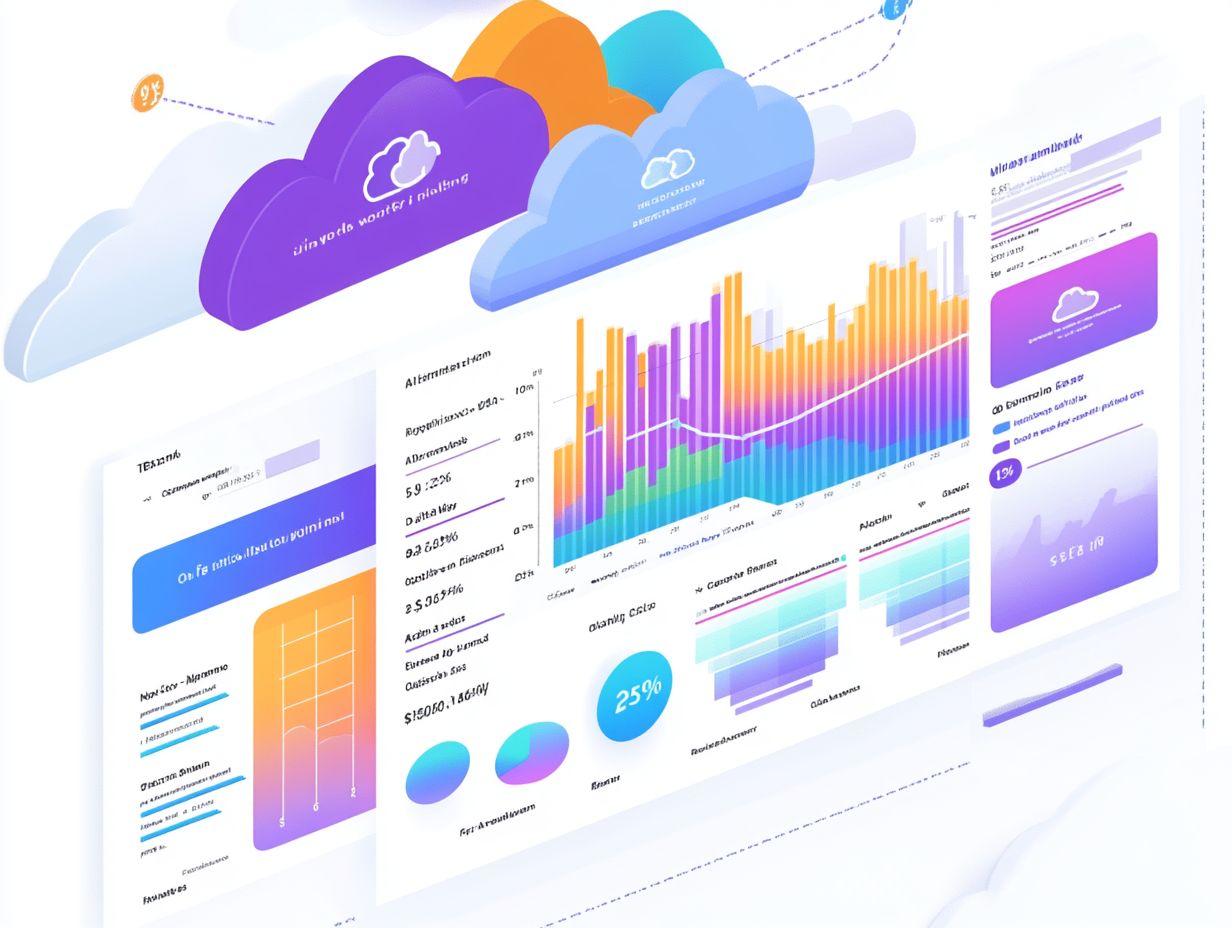
1. Total Cloud Spend
Total cloud spend includes all financial outlays related to cloud services, and it s a crucial aspect of financial operations that you need to track and manage effectively in today s digital landscape. As your business increasingly relies on cloud resources, understanding your total cloud expenses becomes vital for optimizing budget forecasting and ensuring financial accountability.
Implementing effective ways to divide costs and utilizing robust budgeting tools are key to achieving essential cost visibility. This allows you to closely examine your cloud investments.
By accurately allocating cloud expenses across various departments or projects, you can uncover spending patterns that directly influence your decision-making process. Regularly analyzing spending trends not only helps you pinpoint areas where costs can be trimmed but also aligns your cloud expenditures with the overall organizational budget.
This comprehensive approach ensures that cloud services are understood not in isolation but as part of your broader financial strategy, ultimately leading to better resource allocation and enhanced operational efficiency.
2. Cost per Resource
Evaluating the cost per resource is crucial for you if you’re looking to enhance your cloud cost management strategies. This process allows you to pinpoint which cloud resources significantly impact your overall expenditures.
By systematically analyzing your usage patterns and correlating them with associated costs, you can uncover deeper insights into your resource allocation. This approach not only reveals inefficiencies but also highlights underutilized assets that, with a bit of optimization, can lead to substantial savings.
Understanding these metrics gives you the power to make informed decisions about scaling and reallocating resources effectively. Ultimately, this comprehensive approach to resource management fosters an environment where 5 ways to enhance cloud cost visibility thrive, driving operational efficiencies.
3. Cost per User
Cost per user is a vital metric that gives you the power to assess the financial efficiency of your cloud services and applications. It offers valuable insights into how individual users contribute to your overall cloud expenditures.
By grasping this metric, you can evaluate your resource allocation strategies more effectively, ensuring that your funds are channeled into areas that promise the highest return on investment. Analyzing cost per user enables you to pinpoint which cloud applications provide the most value and which ones might need revisiting or adjustments.
Utilizing cloud metrics not only enhances your understanding of user engagement but also helps you monitor the efficiency of your cloud spending. For effective management, consider exploring 5 tools to monitor cloud costs. This drives informed decisions that can ultimately optimize resource use and elevate operational performance.
In essence, this metric promotes financial accountability while fostering a culture of strategic planning and sustainable growth.
4. Cost per Application
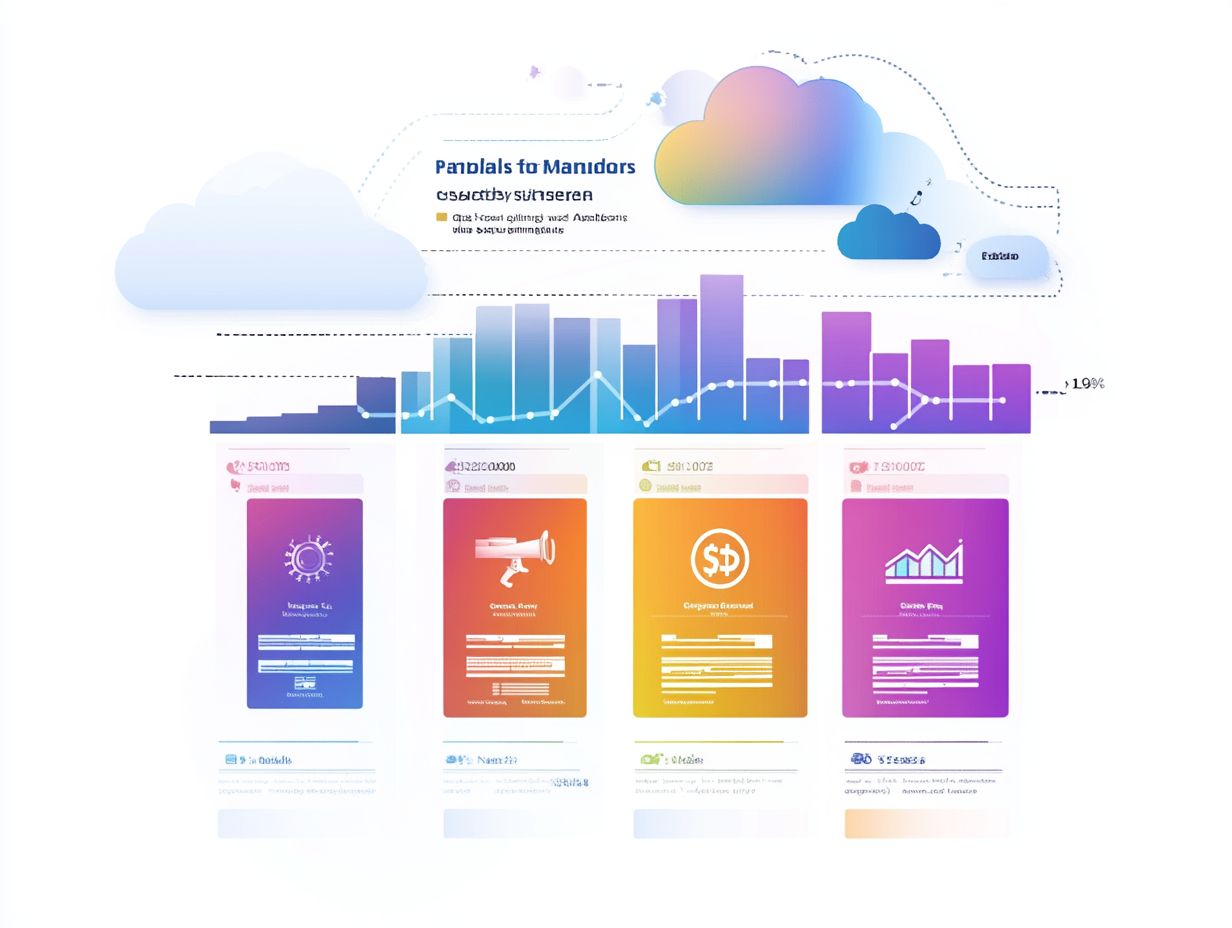
Understanding the cost per application is crucial for effective cloud cost management. It provides a detailed look at how each application affects your overall cloud spending.
By examining usage patterns and resource needs, you can uncover important insights. This helps identify inefficiencies and highlights opportunities for cost savings.
As you learn about application costs, you can unlock significant savings. This knowledge allows you to allocate your budget more effectively while maximizing performance.
5. Cost per Workload
Cost per workload is an essential metric for managing cloud environments. It sheds light on the financial implications of your cloud workloads, enabling effective resource allocation.
Grasping this metric enhances cost visibility and allows you to track and optimize your spending. For deeper understanding, consider these 5 key takeaways for cloud cost management success. This insight reveals inefficiencies and empowers you to make informed resource deployment decisions.
Finding the right balance in performance is crucial. It ensures resources are allocated effectively and utilized to their fullest potential.
Ultimately, adopting strategic approaches helps minimize cloud expenditures while maximizing output. This drives overall operational efficiency and supports scalability and innovation.
Why Is Cloud Cost Management Important?
Cloud cost management is essential as you navigate the intricacies of cloud tools and services. To enhance this process, consider exploring 5 ways to improve cloud cost transparency. This ensures your financial operations run smoothly and protects you from financial risks tied to cloud investments.
Adopting robust cost management solutions optimizes your budget forecasting and resource allocation. This strategy empowers you to gain clarity on your spending patterns and usage.
By taking a proactive stance, you can identify wasteful expenditures. This helps uncover areas for efficiency improvements.
With timely insights, cloud cost management can transform your organization s financial health today. It allows your teams to react swiftly to market changes and make data-driven adjustments for optimal resource utilization.
What Are the Potential Risks of Poor Cloud Cost Management?
Poor cloud cost management exposes you to substantial financial risks. These risks can lead to unexpected expenses and wasteful spending, undermining your business objectives.
Cost anomalies often reveal when actual cloud usage strays from your budget. Over time, these discrepancies can accumulate hidden costs, jeopardizing both project and organizational financial health.
Wasted resources, like underutilized instances or orphaned assets, can stifle team efficiency.
To navigate these financial pitfalls, implement effective waste reduction strategies. By proactively monitoring your cloud expenditures, you can lower associated risks and pave the way for smarter investments.
What Are the Key Factors to Consider When Managing Cloud Costs?
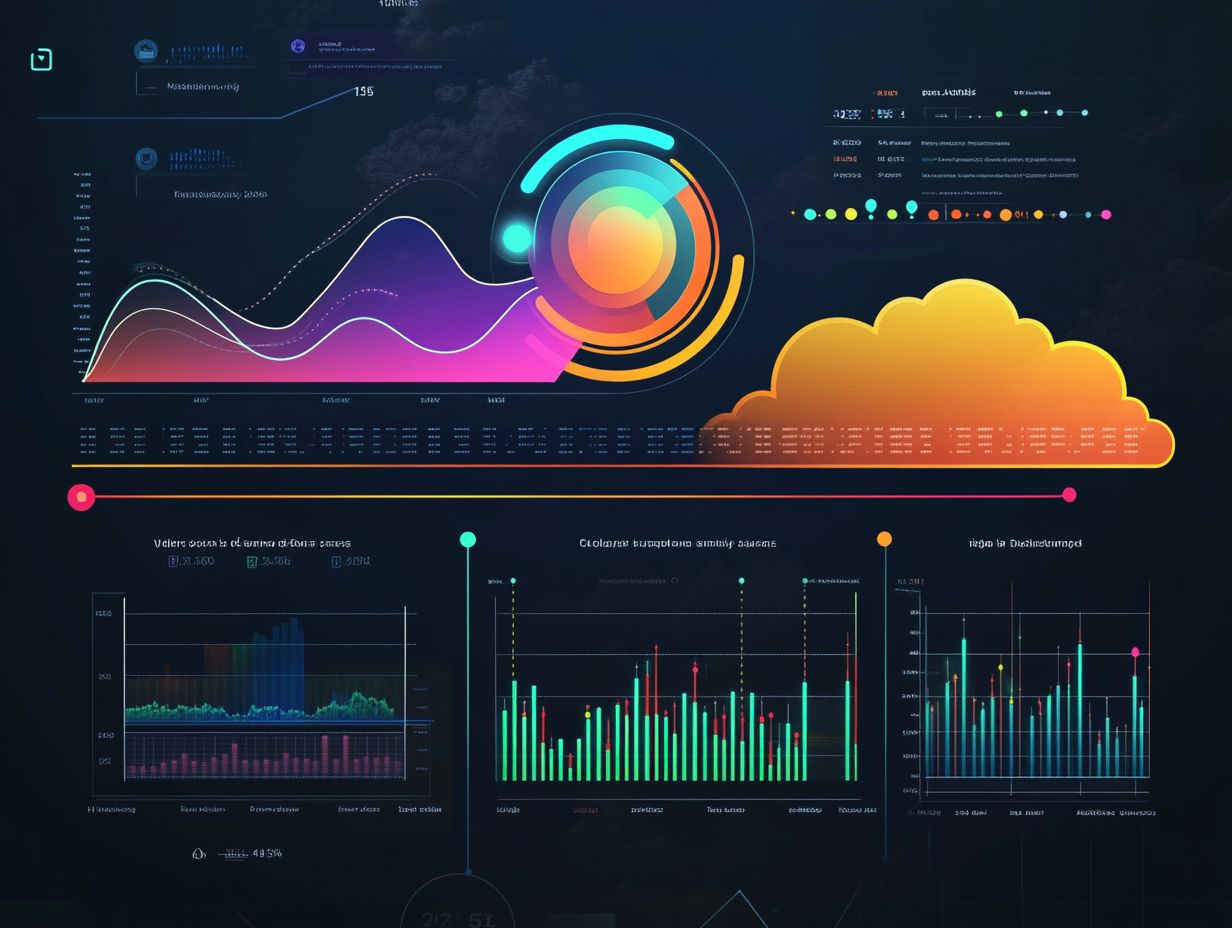
When managing cloud costs, it’s essential to consider several key factors, including the must-have features in cloud cost management tools, to ensure financial operations are efficient and aligned with organizational budgets.
This includes a focus on resource allocation, application usage, and comprehensive cost optimization strategies.
Careful planning for resource use is crucial. It ensures services are provisioned in a way that supports core business objectives while avoiding unnecessary expenditures.
Understanding how applications are utilized within your organization can reveal significant savings opportunities. By analyzing workloads and scaling resources according to actual demand, you can eliminate waste and boost operational efficiency.
Align your cloud spending with the organization s financial plan. This not only helps you adhere to budget constraints but also empowers stakeholders to make informed decisions about future investments, fostering a culture of accountability throughout the enterprise.
How Can Businesses Optimize Their Cloud Cost Management?
Optimizing your cloud costs is exciting and achievable! Utilize advanced cloud technologies, budgeting tools, and cloud management solutions that provide valuable insights into resource utilization and spending patterns.
To master this optimization process, integrate cloud management tools that focus on anomaly detection, which identifies unexpected changes in resource use. These tools pinpoint spikes in resource usage and help fine-tune performance across workloads.
By analyzing historical utilization patterns, you gain crucial data for informed budgeting decisions. Understanding your unique usage trends enables more effective resource allocation and trimming of unnecessary expenditures.
This strategic approach ensures your cloud investments align closely with organizational goals and operational needs, creating a balanced and efficient cloud ecosystem.
What Are the Common Mistakes Businesses Make with Cloud Cost Management?
Common mistakes in cloud cost management often arise from a lack of financial accountability and oversight. This can lead to cost anomalies, overspending, and diminished operational efficiency.
Without a structured framework to monitor usage and expenses, unexpected charges may overwhelm your budget.
When teams operate in silos, they miss potential cost-saving opportunities, increasing the risk of misallocating resources. This disconnect can inflate spending and jeopardize long-term sustainability.
Create strong processes to track your cloud usage. This enhances visibility and cultivates a culture of responsibility among your teams. By investing in advanced analytics and monitoring tools, you gain deeper insights, steering clear of pitfalls associated with inadequate cloud management.
What Are the Future Trends in Cloud Cost Management?
Future trends in cloud cost management reveal an increasing reliance on advanced technologies like AI and machine learning for precise spending forecasts, anomaly detection, and innovative cost-saving strategies.
As you navigate the complexities of cloud expenditures, these technologies refine your financial operations and empower you to make well-informed decisions regarding investments.
By leveraging AI-driven analytics, you uncover deeper insights into usage patterns, enabling more strategic budgeting and resource allocation.
To harness these innovations, implement automated monitoring tools that quickly identify discrepancies and suggest adaptive measures.
Cultivating a culture of financial accountability and continuous learning ensures your teams remain agile and responsive to evolving financial landscapes, ultimately maximizing the return on cloud investments.
Frequently Asked Questions
Questions about cloud cost management? Here are some answers.
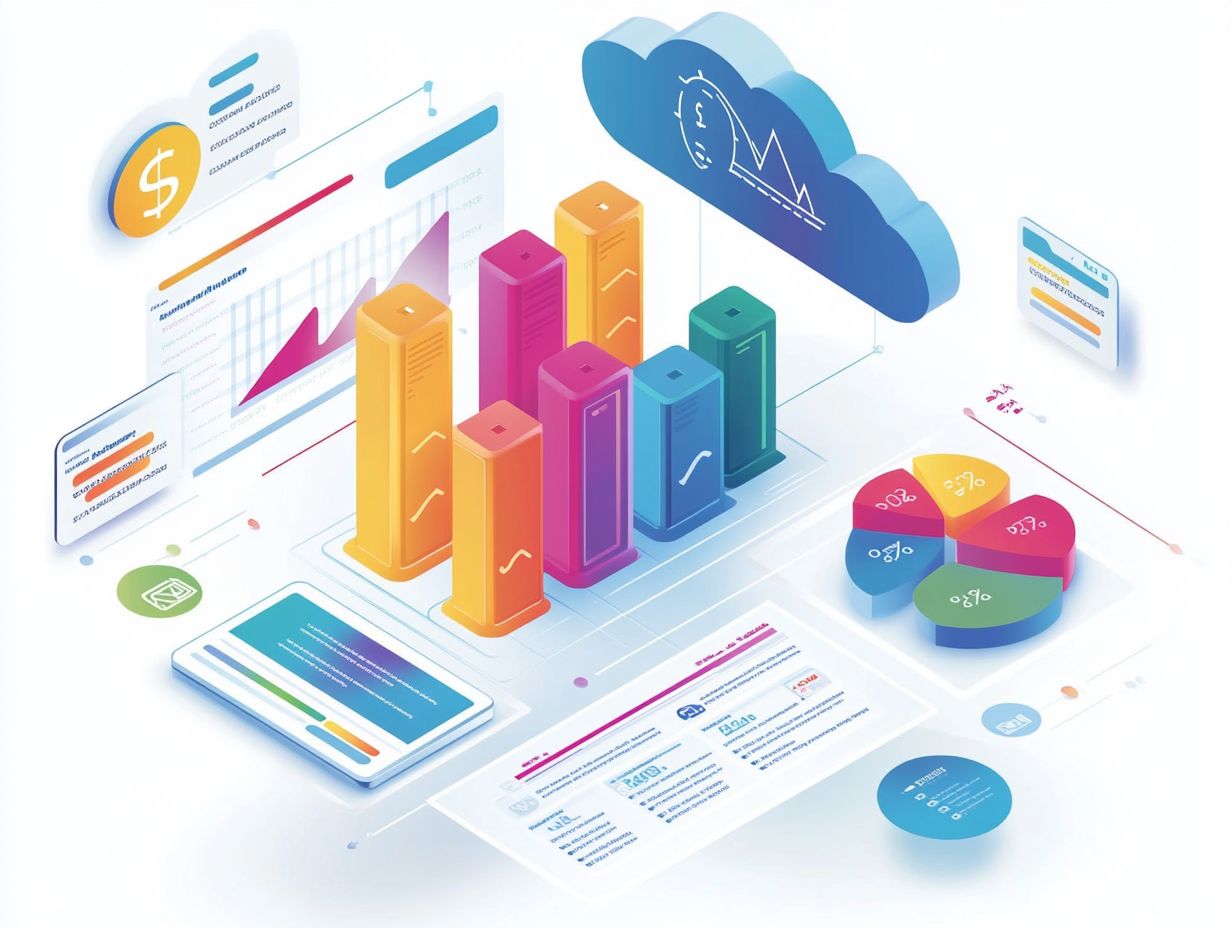
What are the 5 important cloud cost management metrics?
The five key metrics for cloud cost management are: cost per compute hour, cost per storage unit, cost per network transfer, cost per user, and cost per application.
Why are these metrics important for cloud cost management?
These metrics help businesses track their cloud spending effectively. They identify areas of overspending and assist in optimizing usage and costs, providing insights into 5 things to know about cloud cost management.
What is cost per compute hour?
Cost per compute hour measures how much it costs to run a virtual machine essentially, a computer in the cloud for an hour. This includes expenses for CPU, RAM, and other resources used during that time.
How is cost per storage unit calculated?
To calculate cost per storage unit, divide the total storage cost for a period by the amount of storage used. This helps businesses monitor their storage costs closely.
Why is cost per network transfer an important metric?
This metric measures the cost of transferring data within a cloud provider or between different providers. Understanding these costs allows businesses to optimize their data transfer patterns.
How can the cost per application metric help businesses with cloud cost management?
The cost per application metric tracks expenses for running specific applications in the cloud. By comparing these costs to overall spending, businesses can identify the most expensive applications and find ways to cut costs.





